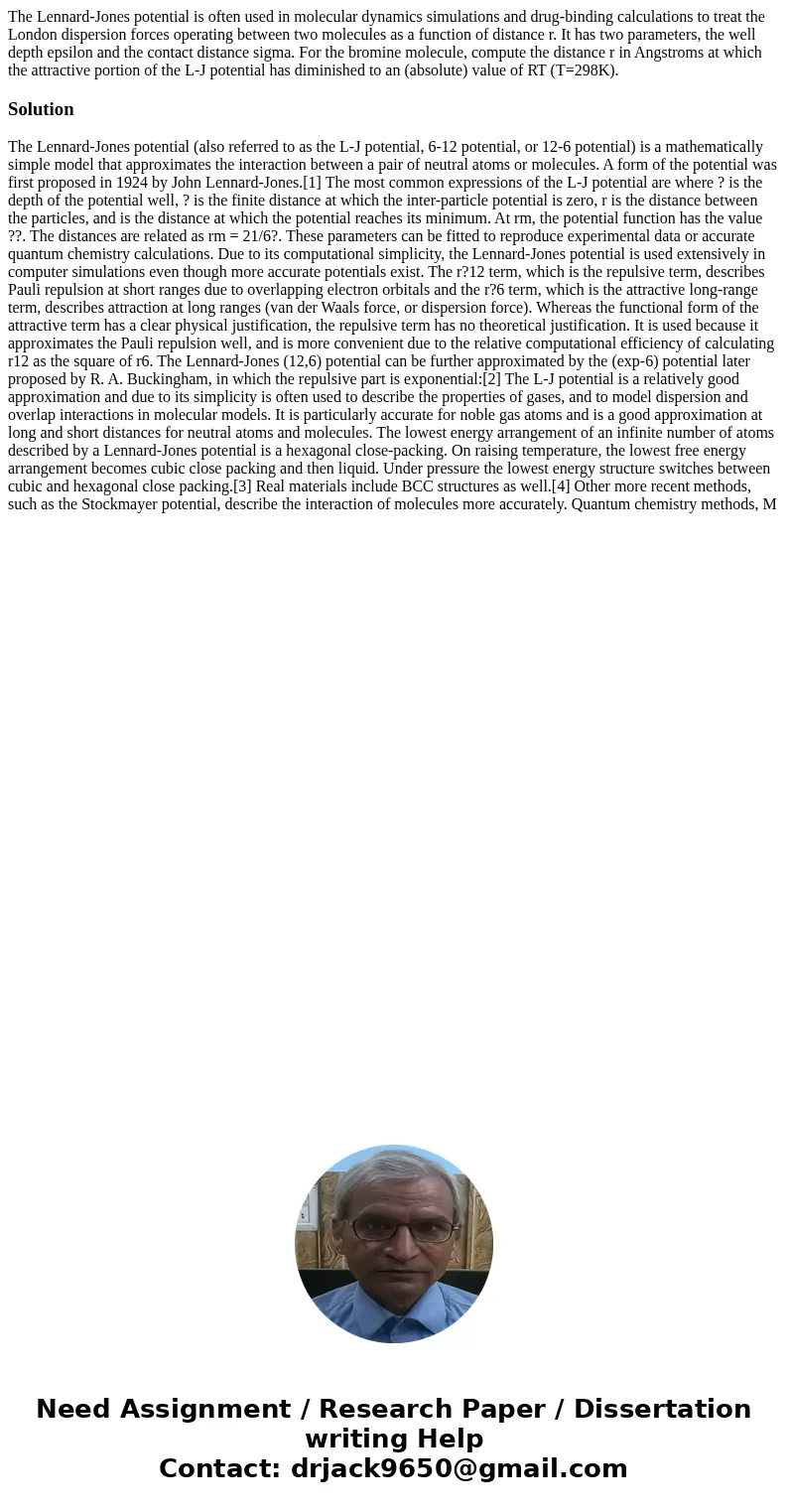The LennardJones potential is often used in molecular dynami
The Lennard-Jones potential is often used in molecular dynamics simulations and drug-binding calculations to treat the London dispersion forces operating between two molecules as a function of distance r. It has two parameters, the well depth epsilon and the contact distance sigma. For the bromine molecule, compute the distance r in Angstroms at which the attractive portion of the L-J potential has diminished to an (absolute) value of RT (T=298K).
Solution
The Lennard-Jones potential (also referred to as the L-J potential, 6-12 potential, or 12-6 potential) is a mathematically simple model that approximates the interaction between a pair of neutral atoms or molecules. A form of the potential was first proposed in 1924 by John Lennard-Jones.[1] The most common expressions of the L-J potential are where ? is the depth of the potential well, ? is the finite distance at which the inter-particle potential is zero, r is the distance between the particles, and is the distance at which the potential reaches its minimum. At rm, the potential function has the value ??. The distances are related as rm = 21/6?. These parameters can be fitted to reproduce experimental data or accurate quantum chemistry calculations. Due to its computational simplicity, the Lennard-Jones potential is used extensively in computer simulations even though more accurate potentials exist. The r?12 term, which is the repulsive term, describes Pauli repulsion at short ranges due to overlapping electron orbitals and the r?6 term, which is the attractive long-range term, describes attraction at long ranges (van der Waals force, or dispersion force). Whereas the functional form of the attractive term has a clear physical justification, the repulsive term has no theoretical justification. It is used because it approximates the Pauli repulsion well, and is more convenient due to the relative computational efficiency of calculating r12 as the square of r6. The Lennard-Jones (12,6) potential can be further approximated by the (exp-6) potential later proposed by R. A. Buckingham, in which the repulsive part is exponential:[2] The L-J potential is a relatively good approximation and due to its simplicity is often used to describe the properties of gases, and to model dispersion and overlap interactions in molecular models. It is particularly accurate for noble gas atoms and is a good approximation at long and short distances for neutral atoms and molecules. The lowest energy arrangement of an infinite number of atoms described by a Lennard-Jones potential is a hexagonal close-packing. On raising temperature, the lowest free energy arrangement becomes cubic close packing and then liquid. Under pressure the lowest energy structure switches between cubic and hexagonal close packing.[3] Real materials include BCC structures as well.[4] Other more recent methods, such as the Stockmayer potential, describe the interaction of molecules more accurately. Quantum chemistry methods, M
 Homework Sourse
Homework Sourse